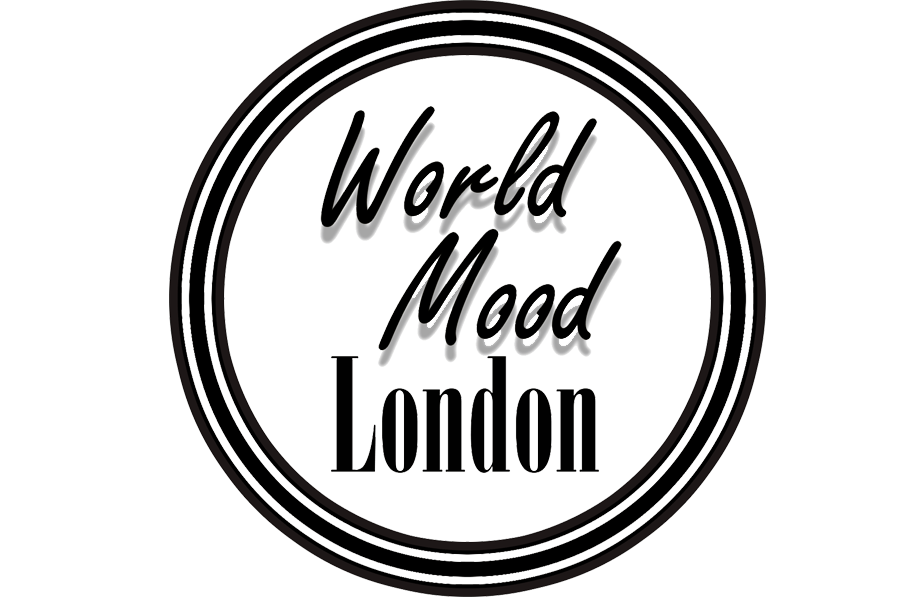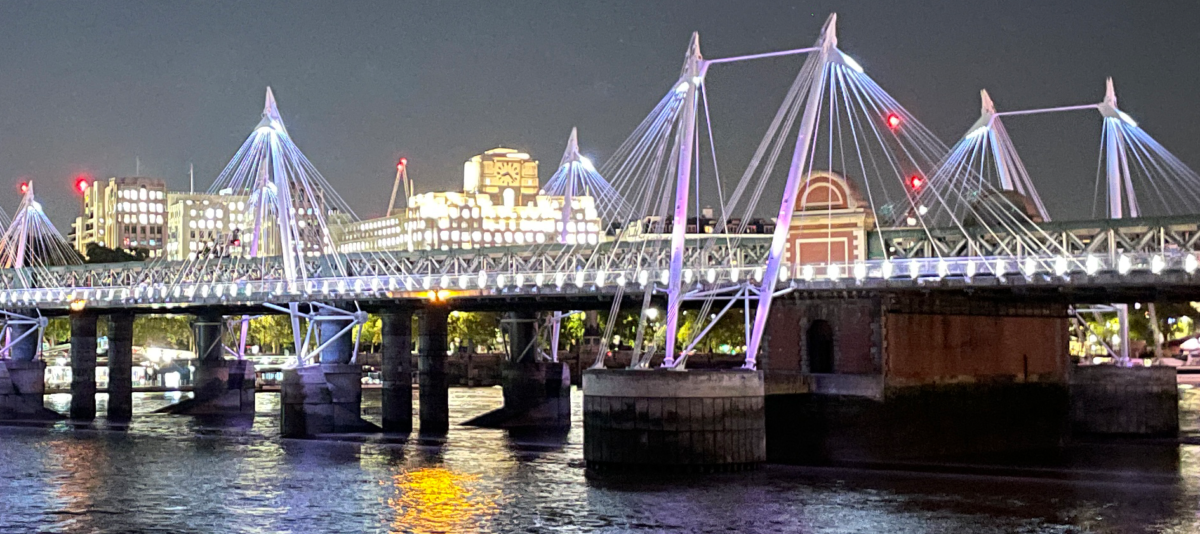London Bridge is falling down! Did it really though…
One of my favourite free installations to come to the city in 2019 is the illuminated river. At dusk until 2am every evening, the bridges from London bridge to Lambeth bridge are illuminated.
Each of the bridges have their own character and style making each of them a marvel to behold. So let’s delve into the history behind these architectural masterpieces crossing the Thames.
Lambeth Bridge
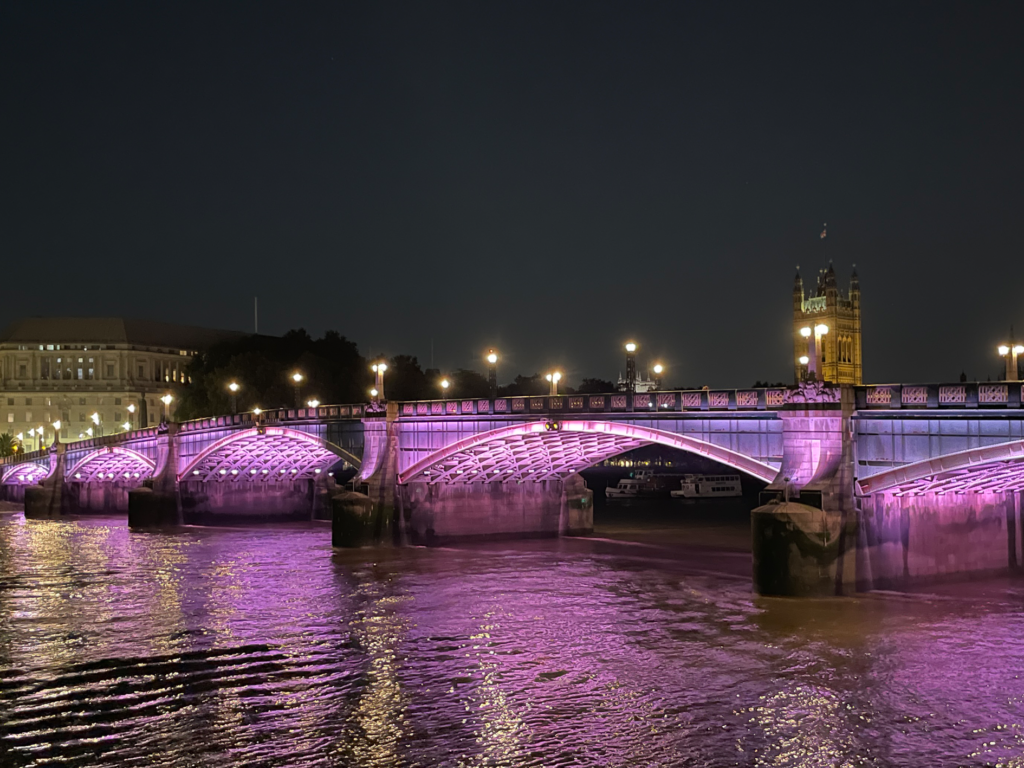
Records on Lambeth Bridge date back to the 14th century of it being used as an ancient horse ferry for travel between Lambeth Palace and Westminster Palace.
It was decided to build the bridge in 1737 but took until 1861 to find a company to construct it, opening in 1862. Despite the long planning stage, by 1910 it was suffering from rusting and oxidization so was closed for use. It was eventually reopened in 1932 by King George V.
On either side are obelisks with pinecones atop, which are the symbol of hospitality. Although some say these are actually pineapples in tribute to Lambeth’s Tradescant family who grew the first Pineapple in England
When I used to do river tours, it was rumoured amongst the guides that, while Lambeth bridge is red for lords and Westminster green for Commons, they were built so each party had their own bridge to cross. Parliament was having trouble stopping fights physical breaking out after debates, so the second bridge was built. In researching for this piece, I couldn’t find a lick of evidence for this, but nevertheless I loved listening to the story though.
Westminster Bridge
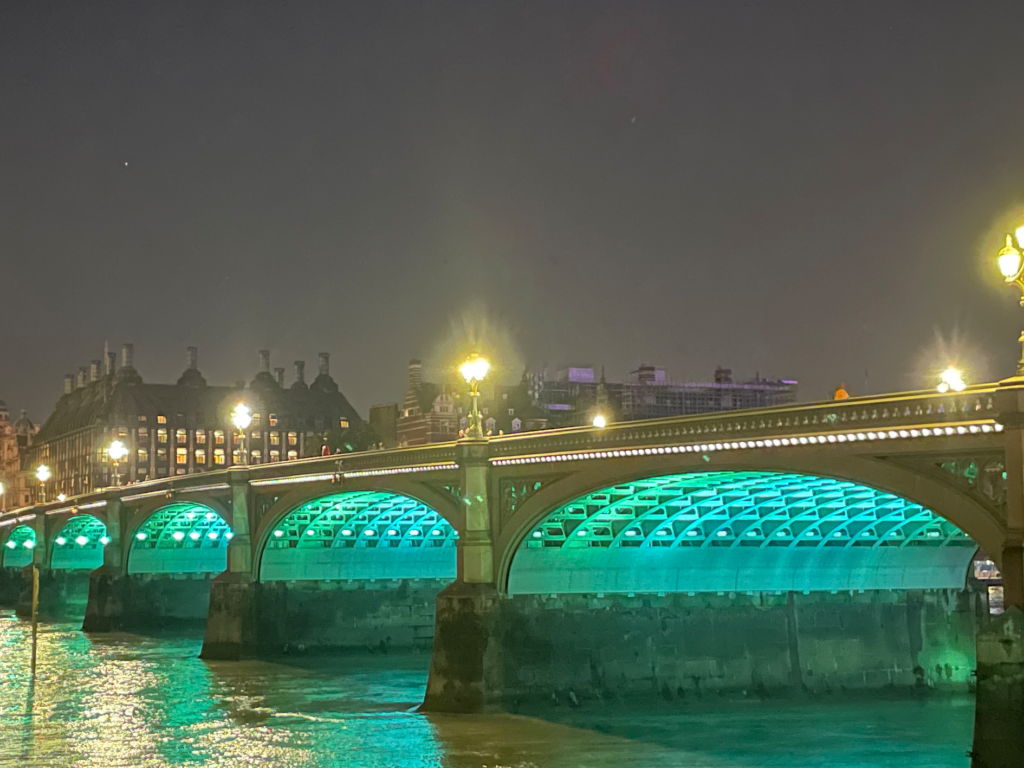
Westminster Bridge was originally proposed in 1664 and was massively opposed by the ferrymen who would shuttle people across the river. The ferrymen argued it would be a loss of jobs if people could cross on foot. The only bridge in action at the time were Kingston Bridge and London Bridge, sitting at 14 miles apart. This whole thing stinks of the Uber/ black cabs debate in recent years. The ferrymen even took to send King Charles 2 a bribe of £100,000 to reject the idea. Westminster bridge was finally approved in 1736.
The bridge was meant to be funded by a lottery, which raised less than half the capital needed. Due to the catastrophic funding endeavour and the government having to put up the rest of the funds, the bridge was given the nickname “Bridge of Fools”. To add insult to injury in the end the project took 11 years to complete.
Now the bridge we are talking about is not the same one we see today, as it was rebuilt and opened for a second time in 1862.
The gothic structure that stands today is 827 feet long, painted green in a nod to the house of commons, with symbols worked into the ironwork such as thistles, portcullis, the cross of st George, a rose and a shield.
Hungerford Bridge and Golden Jubilee Footbridges
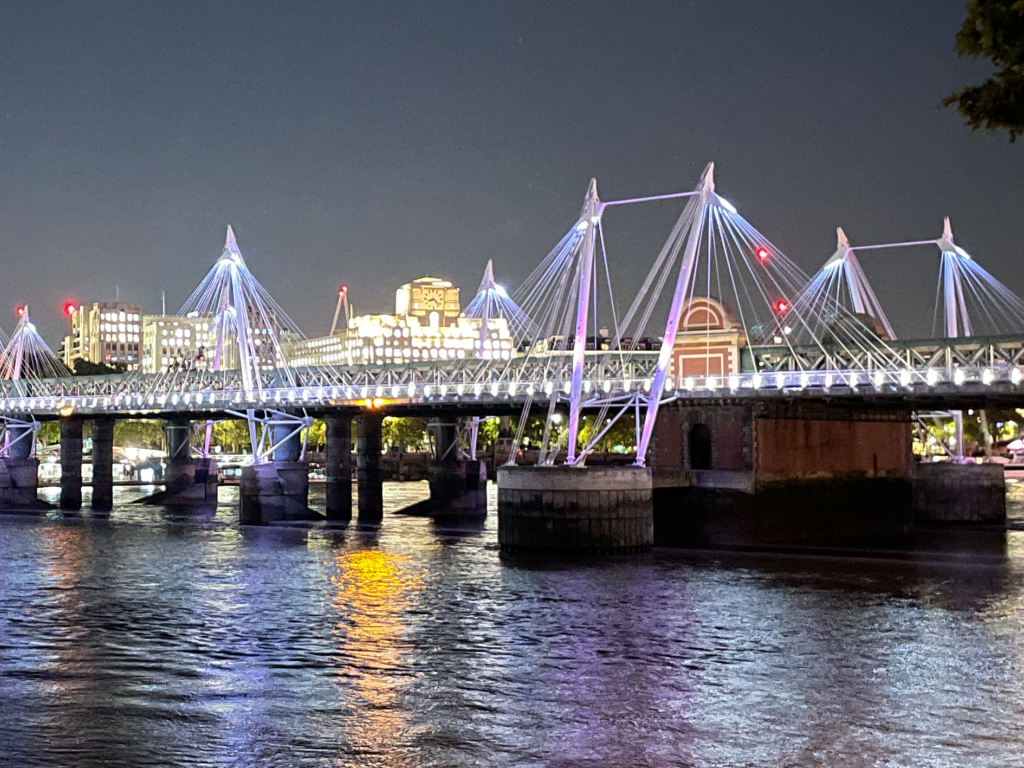
Well it began its life as just the Hungerford Bridge a suspension bridge designed by engineering giant Isambard Kingdom Brunel and commissioned by Hungerford Market to bring in more business. Considering on day 1 of opening the toll bridge was used by approximately 80,000 people, I would say it was a hit.
In the mid 19th century, the Bridge and market was bought out by South Eastern Railway Company, and the Bridge expanded to make room for an increase of railway tracks, as new kid on the block, Charring Cross station was making its way onto the scene.
Bringing us on to the Golden Jubilee Footbridges, these came into fruition in 2006 following on from a competition launched in 1996 to design a Footbridge that would site side by side with the Hungerford Bridge. Then named to honour the Queen Elizabeth’s Golden Jubilee year.
Building the bridge seemed to be quite the challenge, with parts having to be dug and place manually due to risk of unearthing and detonating unexploded WW2 bombs. I used to host boat tours along the river, and we would hear of a suspected WW2 bomb being dredged up every couple of months.
Waterloo Bridge
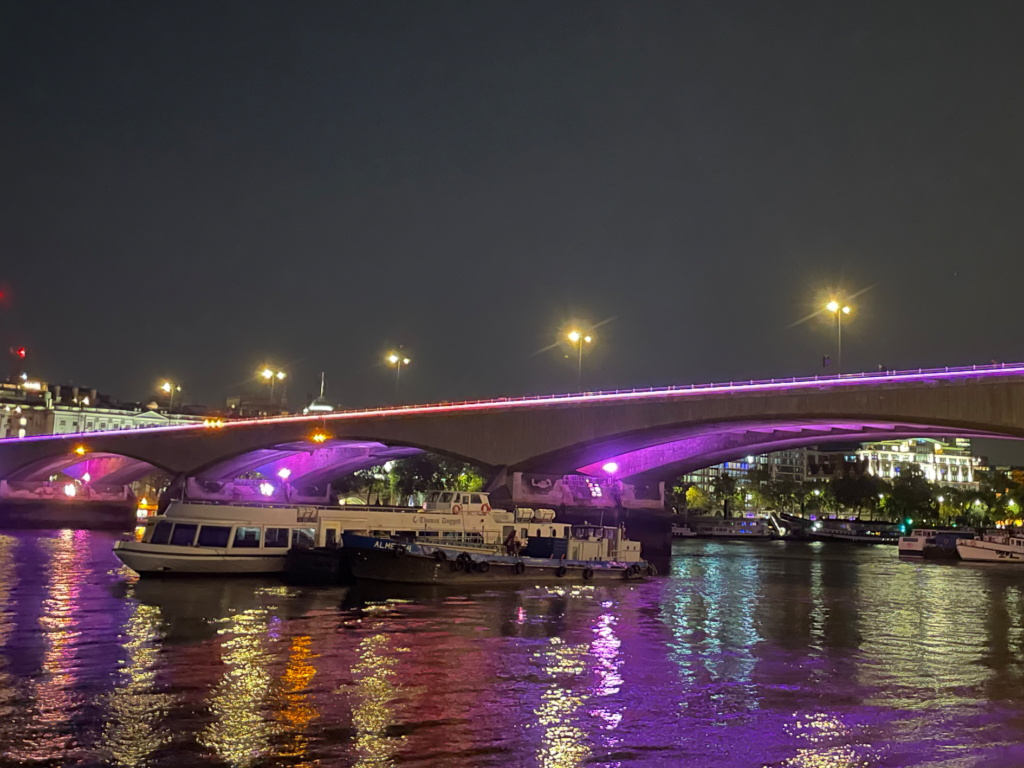
As with so many, it is not the first of its name, the first was built in 1817 to commemorate the British win at the Battle of Waterloo. The OG stuck around until the 1930’s when it was demolished due to the amount of erosion caused by the fast-flowing river. It was called ‘The noblest of bridges’ and inspired painters of the time such as Monet and Constable.
Nowadays it is otherwise known as the “Ladies Bridge” as when it was being rebuilt, the men were all being called upon to fight. The girls had to do their fair share of fighting to get it completed, as it was the only bridge to suffer hits during the air raids.
It’s probably the cleanest of the bridges, as it is made of Portland Stone, which self-cleans itself when it rains, perfect for the UK’s dreary weather.
Blackfriars Bridge and Blackfriars Railway Bridge
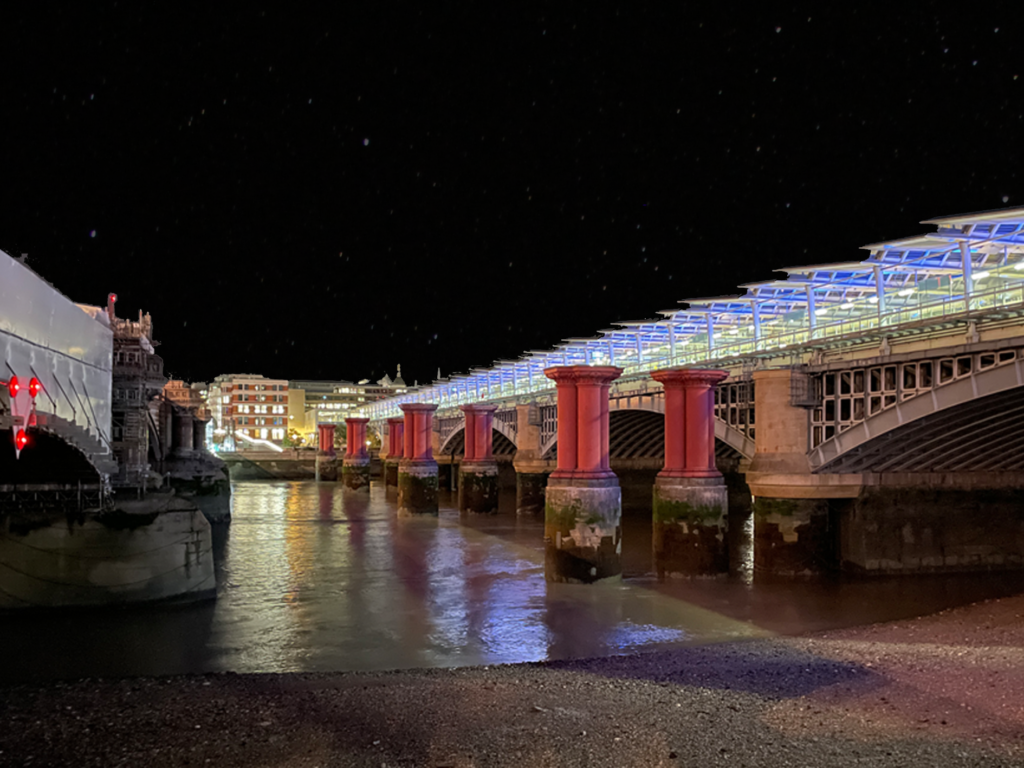
Blackfriars Bridge is first up as the road and footbridge originally built in 1769 and rebuilt in 1869. It was originally named the William Pitt Bridge after the Prime Minister. Although was changed years later, after William Pitt’s fall from popularity, to Blackfriars Bridge.
Even more scandalous goings on happened in 1982 when Robert Calvi, the chairman of Italy’s largest private bank was found hanging from the Bridge with five bricks and £14,000 in various currencies in his pockets. At the time the death was considered suicide, but in 2002 forensic experts re-examining the case believed he had been murdered by the Mafia.
We then move on to Blackfriars Railway Bridge, this used to be two Bridges built in 1884 (Blackfriars Railway Bridge) and in 1886 (St Pauls Railway Bridge). The original railway bridge was mostly demolished in the 1985, as in the end it couldn’t keep up with the demands of the modern trains. The red pillars of the demolished bridge are still visible today, in between to two Bridges as these couldn’t be removed without causing damage to the now Blackfriars Railway Bridge.
The second bridge, originally St Paul’s Railway Bridge, changed it name to Blackfriars in 1937, to keep the same name as the railway station. Today the Bridge serves as Blackfriars Railway Station, which began on the south side of the river. Various expansions and renovations have been built on the original framework of the structure to stretch the station to the north side of the river also.
Millennium Bridge
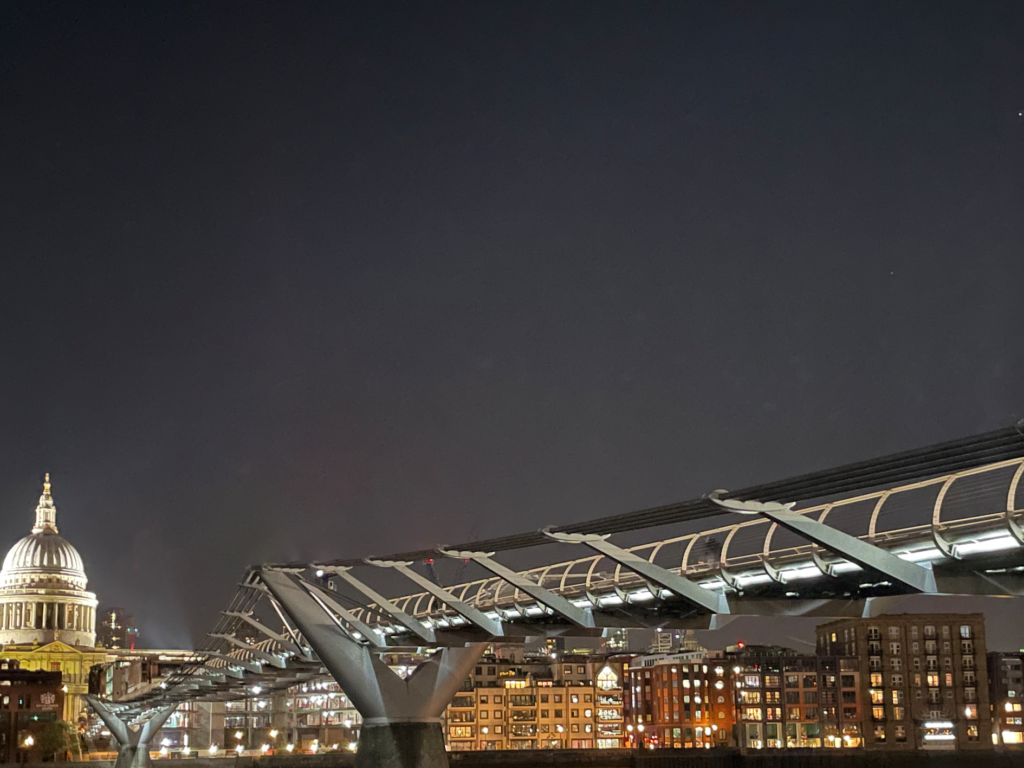
The Wobbly Bridge, as it was coined when opened in 2000, it was the first new Bridge brought to the city in over 100 years. In the first few days of opening over 90,000 people went for a walk over the Bridge causing it to sway. The sway meant when people were walking over the Bridge they would naturally step in time with the movement, causing the sway to get a whole lot worse, to the extent people reporting it felt like ice skating. In the end the Bridge was closed and reopened a few months later.
There are a few Millennium Bridges around the world, that were built to commemorate the year 2000, there are six more in the UK alone.
It’s quite the celebrity and has featured in a few films since its arrival onto the scene, most notably it was blown up by the death eaters in Harry Potter and the Half Blood Prince.
Southwark Bridge
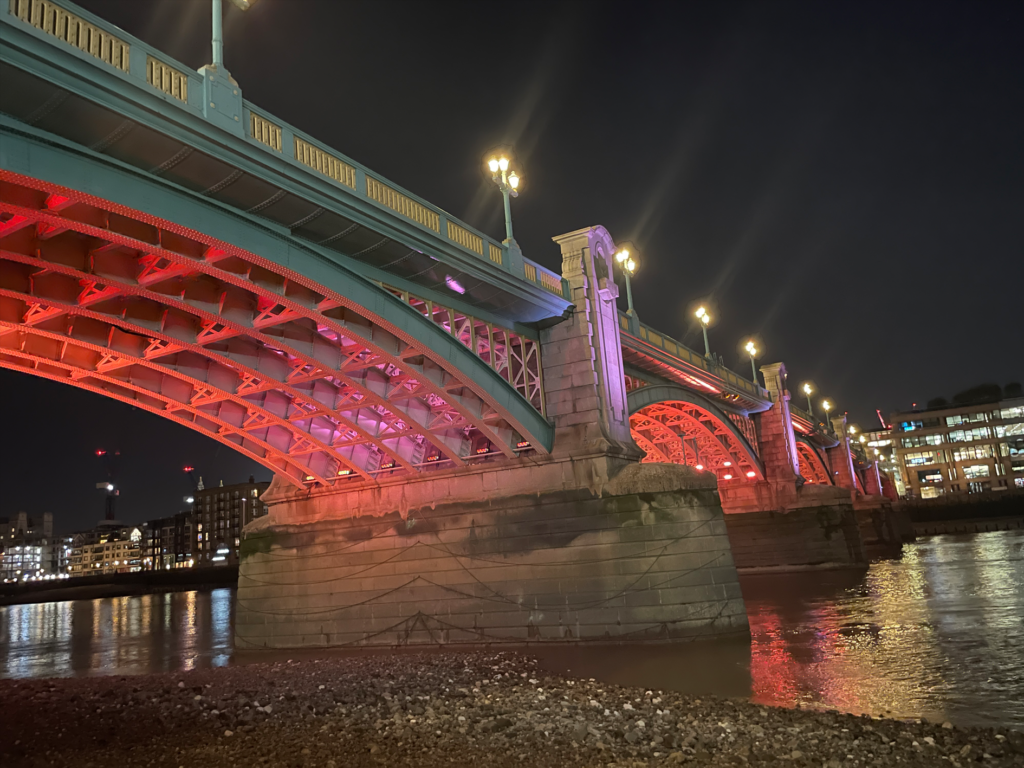
I have always called this the lonely bridge, as where it is not connected on a through route, the traffic on the Bridge has always been low, so the people stood on it always seem to be quite lost. Although in my research I couldn’t find it being referred to as such, but who knows maybe we can make it stick.
It opened in 1819, as a toll bridge, and proved to be a terrible investment, as it didn’t really relieve much traffic from the nearby Blackfriars and London Bridge. The first incarnation stuck around for just over 100 years before being rebuilt in 1921.
Today, there is a tunnel under the north side of the Bridge is a tunnel where you can find a wall mural, depicting the Thames Frost fairs. We think London is a Christmas hotspot today, imagine the River Thames freezing over and being able to go there for skating, food stalls, pubs, and entertainment. It very much puts the Natural History Museum ice rink to shame.
Cannon Street Railway Bridge
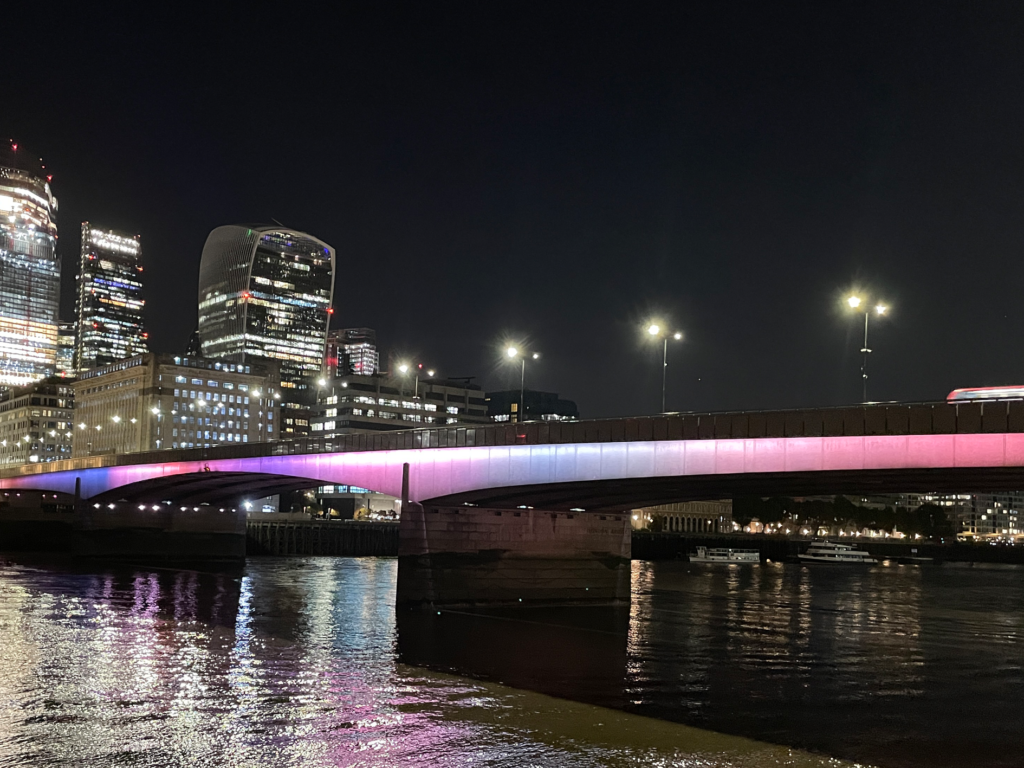
The name is a shortened version of a middle English phrase meaning ‘Street of Candles’. I think there may be an argument to be made to open a Diptyque, Yankee Candle, Neom and Jo Malone in the station, especially as the city isn’t always the best smelling place in the world.
It began its life as the Alexandra Bridge, in hour of the Princess Alexandra of Denmark, wife of Edward VII in 1866.
As with so many of its peers along the river, it has been rebuilt a couple of times, most notably following the damage suffered to it in WW2. The only remaining original feature are the two towers on the north bank, which used to be a part of a five story hotel fronting the station.
You may now be expecting to hear about London Bridge and Tower Bridge next, but if you think I can talk about them in just a paragraph or two you are sadly mistaken.
With the Illuminated London installations happening every evening from dusk until 2am, the best way to appreciate each installation is either by a boat tour or a stroll along the Southbank, which is one of my favourite walks in the city.
